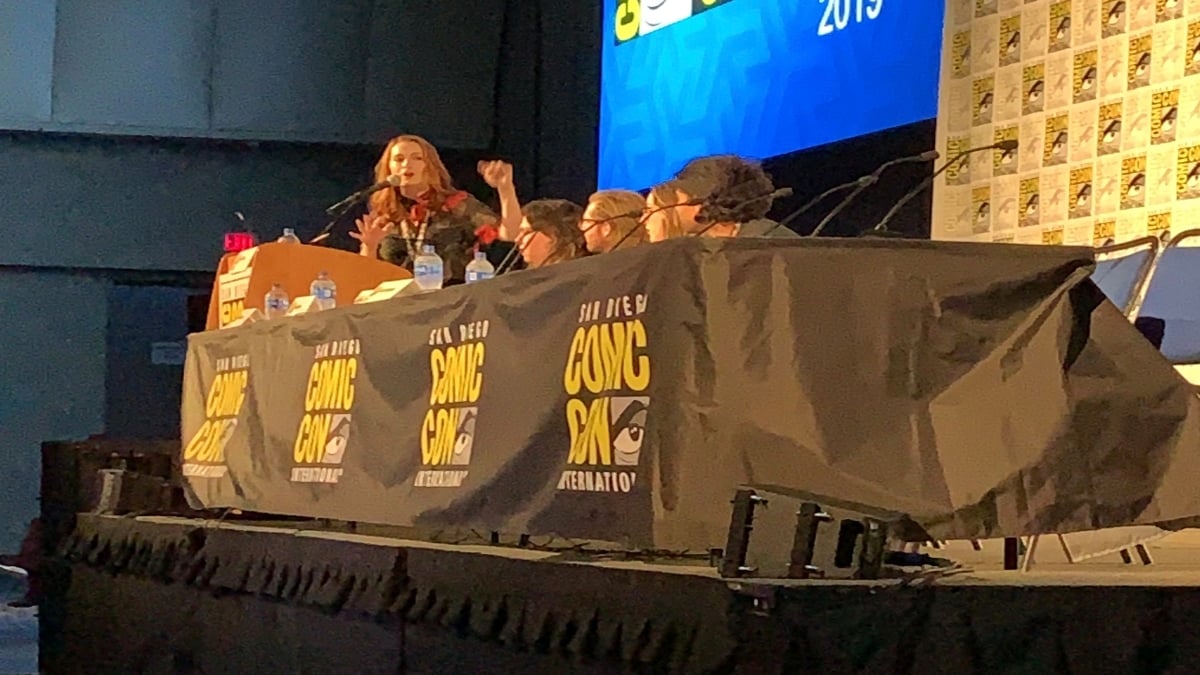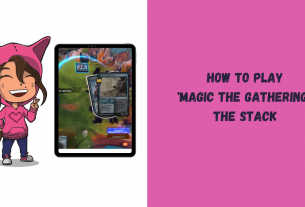If you’re a fan of Pokemon Go and Harry Potter, then you’re probably already playing the new Niantic game Wizards Unite. While Niantic built the Wizards Unite game on top of its Ingress/Pokemon Go maps, the game itself is a unique role-playing game with mechanisms that include choosing your level-up path and giving you a first-person wizard battle experience. During San Diego Comic Con (SDCC), I had the opportunity to both sit in on the Wizards Unite panel and interview the top creators, Portkey Executive Director of Product Mary Casey, Portkey Senior Art Manager April Stegall, Niantic Product Manager Alex Moffit, and Niantic Director of Worldwide Marketing Archit Bhargarva.
What is Wizards Unite?
Wizards Unite builds on the concepts created for Ingress and Pokemon Go but sets them in the wizarding world of Harry Potter. However, its mechanisms are a bit more complex, giving adults a bit more magic than the others. (Ok, real talk here: I tried Ingress to get to Level 10 and hopefully get Pokestops at the soccer fields, but couldn’t figure it out.)
As a parent, I’ve spent countless hours mindlessly spinning Pokeballs to try to catch ’em all. As a family, we all go out on community days or on raid parties with the local Discord group.
Wizards Unite solves some of these problems. You can go into a Fortress by yourself to complete wizarding challenges, but you can also work with friends to do high levels and earn more swag.
The story is compelling if you’re the kind of gamer (like me) who likes to follow a fun narrative that runs throughout the game. Where Pokemon Go did this as an added bonus through “research,” Wizards Unite builds the mystery right into the game’s whole purpose.
What was the creative approach to creating Wizards Unite?
Mary Casey, clearly a Potterhead of epic proportions, believes
the players should be at the heart of their own story. We wanted to take into account all those hopes and dreams of being a wizard. I really wanted to create something that really let you step into the world you love.
Casey wanted a game where everyone could be their own hero, in their own way. She explained, “You don’t have to be Harry, maybe you’re more of a Tonks or more of a Voldemort or Luna or Neville.” The idea that you can create your own set of wizard skills through your choice of profession and even how you choose to play the game brings players into the magical world.
The underlying narrative/mystery intends to provide people relationships and characters with whom they can identify. Casey explained,
We wanted mystery because that’s what Harry Potter is about. And we wanted you to feel connected, which is why a lot of the story is told by characters talking to you. We have a full arc and minor arcs to come later. houses are not as prominent because—we had our Hogwarts experience and it was 7-8 years, that was touching. This game is about having our own story. So it’s a first-person wizard—it’s all about the idea that it’s your window into the world.
The team chose an RPG style because that type of role play is all about being a new character in the world. Players take on professions, each of which complements the other two, so that players can help one another.
What makes AR difficult?
April Stegall explained that because you can’t control things like lighting and other artistic details, creating the art was difficult. The designer chose to create realistic looking character set in a 1930s aesthetic for colors and wizarding aspects.
Both Stegall and Casey focused on the joy of whimsy being represented in the game. Stegall explained, “Whimsy is part of the wizarding world and we wanted to do that.” Casey piggybacked off Stegall’s comment noting, “We wanted to include the idea that we could bring the wonk wherever we could.”
How did they build the Wizards Unite world?
Everything in the game matters. Every. Thing. Weather, moon cycle, location of potion ingredients—every one of these things matters to how you can play the game. According to Alex Moffit, “Despite these things [aspects of the Wizarding World] being in plain sight, people can’t find them. Diagonal Alley is in Charing Cross for a reason. And we wanted to mimic that.“
Moffit told the audience that the map was the most difficult technology but that he believes the world is the best gameboard to play with, which is why they started there. It’s why weather and time are involved. All of the potions and ingredients are in certain places for a reason.
When making the confoundables, WB used actors with sensors to act out the scenes, then created the experiences with the confoundables based on that. According to Casey, “Some of the things were so odd that we had to go looking around for things the actors could use.”
What do the creators want fans to know that they might not?
Alex Moffit: Master notes, play with audio. Voice over is incredible.
April Stegall: Photo mode—if there’s a little camera when you place the confoundable then you can take a picture with it. Also, the beacons tell you how hard the fortress is.
Mary Casey: Background Mode is coming out so you can track your activity (like adventure sync) and we won’t have to wait long.




